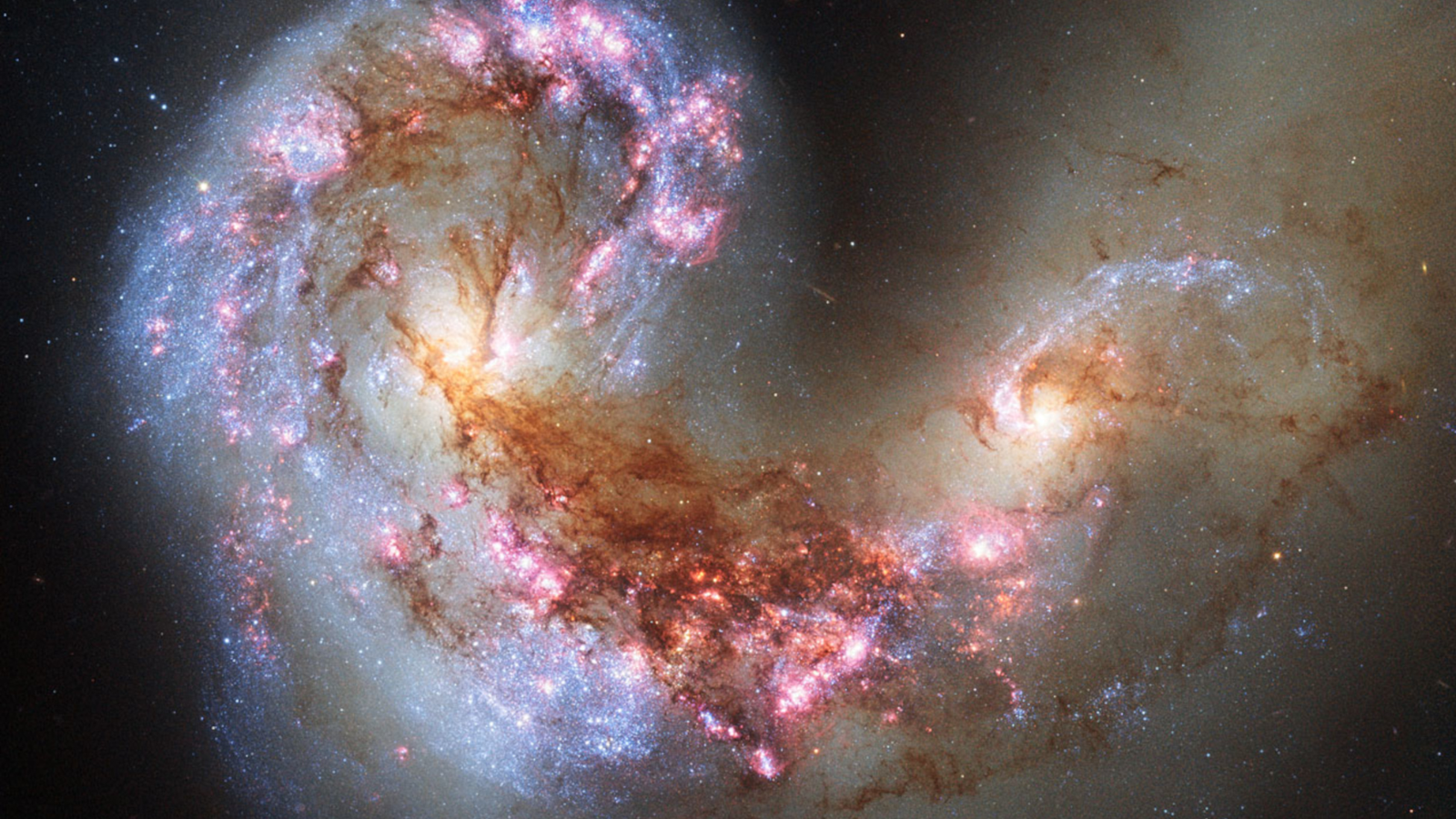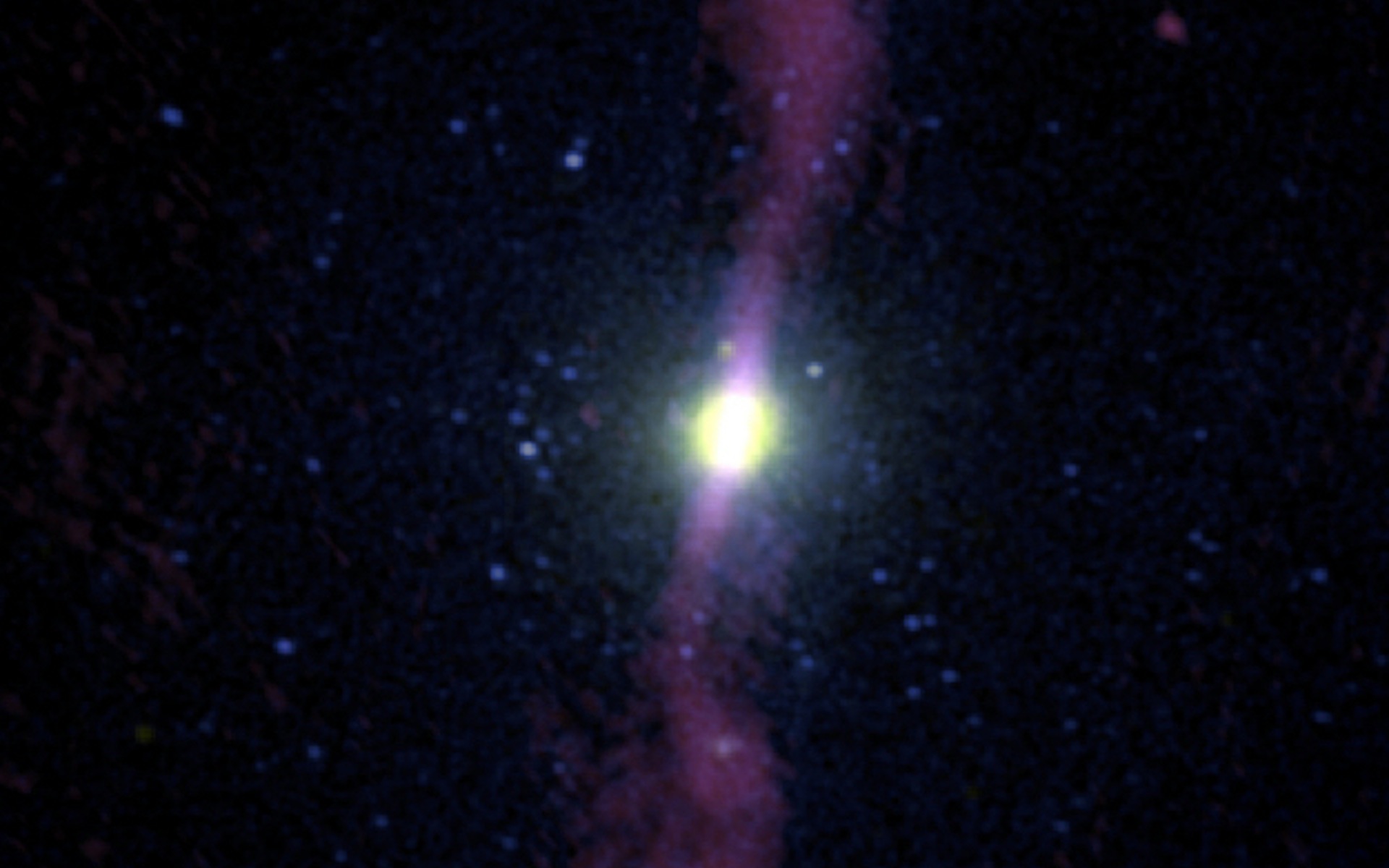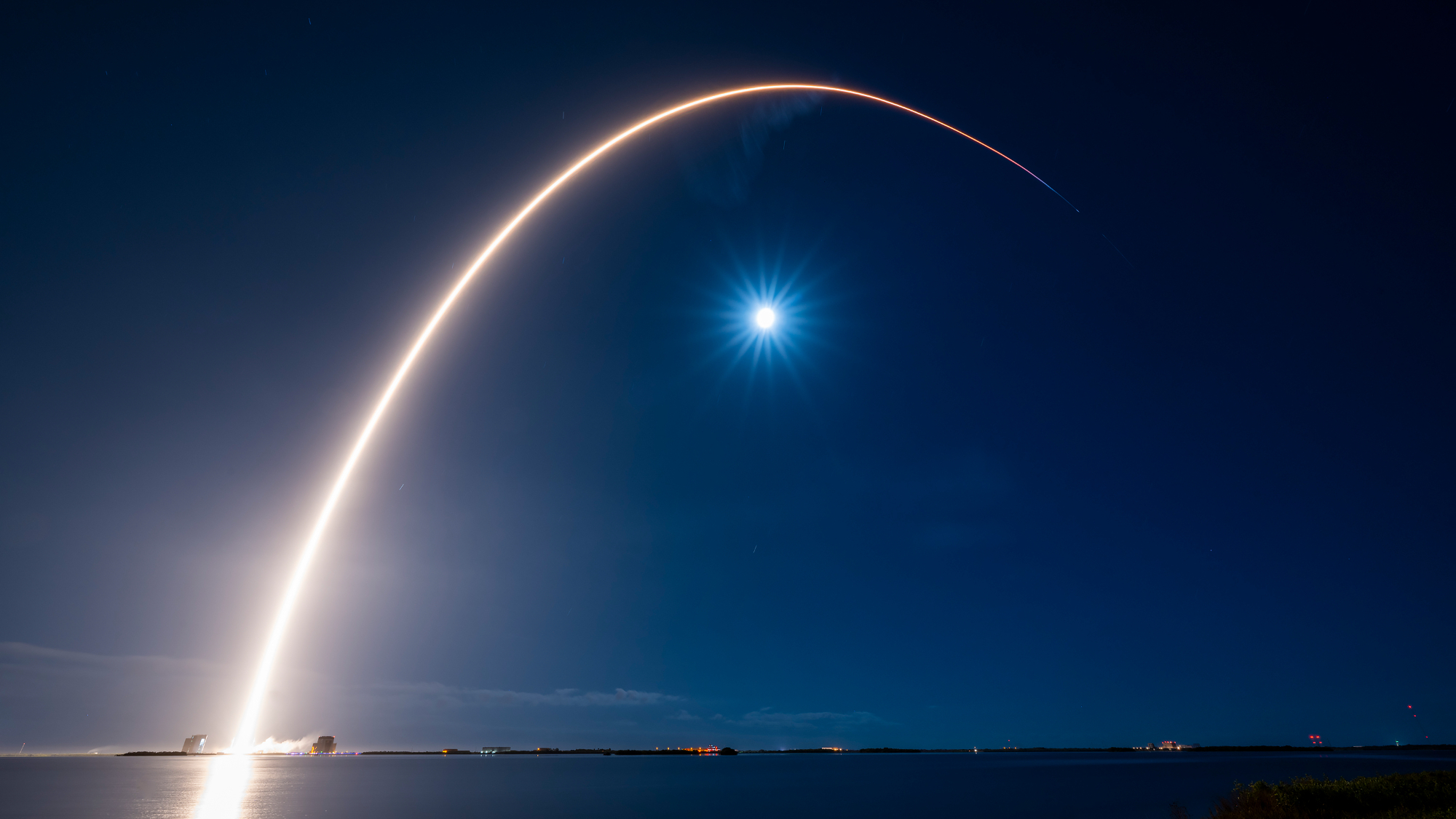Ancient cosmic collisions may have birthed the universe's most monstrous galaxies
"Our findings take us closer to solving a long-standing mystery in astronomy that will redefine our understanding of how galaxies were created in the early universe."

Astronomers have discovered that large flows of cold gas created by collisions between galaxies in the early universe may have forged some of the most monstrous star systems.
The formation of ancient gigantic galaxies that bulge like footballs compared to our relatively flat spiral galaxy, the Milky Way, has confused astronomers for decades.
Now, a team led by scientists from the University of Southampton may have scored a touchdown in this quest. They believe their research may finally solve this long-standing galactic puzzle.
"Two disk galaxies smashing together caused gas – the fuel from which stars are formed – to sink towards their center, generating trillions of new stars," team member and the University of Southampton researcher Anna Puglisi said in a statement. "These cosmic collisions happened some eight to 12 billion years ago when the universe was in a much more active phase of its evolution.
"Our findings take us closer to solving a long-standing mystery in astronomy that will redefine our understanding of how galaxies were created in the early universe."
The team's research was published on Wednesday (Dec. 4) in the journal Nature.

The team made their breakthrough using the Atacama Large Millimeter Array (ALMA). ALMA is the largest astronomical project in existence comprised of 66 radio antennas situated in the Atacama Desert of northern Chile.
Breaking space news, the latest updates on rocket launches, skywatching events and more!
The team gathered high-quality observations of many distant galaxies using ALMA and data from the A3COSMOS and A3GOODSS archival projects. In particular, they analyzed over 100 galaxies that are currently in the process of intensely forming stars.
Team leader Qing-Hua Tan of the Purple Mountain Observatory explained that the project used a new technique to examine the distribution of light from distant and extremely bright galaxies.

"This is the first real evidence that spheroids form directly through intense episodes of star formation located in the cores of distant galaxies," Tan said. "Astrophysicists have sought to understand this process for decades.
"These galaxies form quickly – gas is sucked inwards to feed black holes and triggers bursts of stars, which are created at rates ten to 100 times faster than our Milky Way."
The team will now combine their findings with data collected by the James Webb Space Telescope (JWST) and the Euclid satellite.
This should help them to chart the populations of stars within target galaxies to shine further light on the mystery of giant galaxy formation.
"This will give us a more complete picture of early galaxy formation and deepen our understanding of how the universe has evolved since the beginning of time," Puglisi concluded.
Join our Space Forums to keep talking space on the latest missions, night sky and more! And if you have a news tip, correction or comment, let us know at: community@space.com.

Robert Lea is a science journalist in the U.K. whose articles have been published in Physics World, New Scientist, Astronomy Magazine, All About Space, Newsweek and ZME Science. He also writes about science communication for Elsevier and the European Journal of Physics. Rob holds a bachelor of science degree in physics and astronomy from the U.K.’s Open University. Follow him on Twitter @sciencef1rst.
